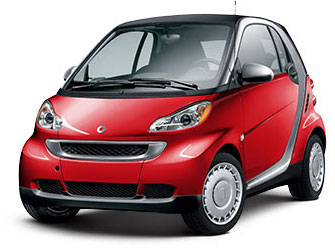It's great to be alive! Until you're run over by a train.
The always awesome 'How To Be a Retronaut' blog had another classically amusing piece recently called 'It's Great to Be Alive! Vintage Safety Manual.' The piece, (and you really should go and check it out), features a series of images from a 1940s era safety manual aimed at elementary school age kids. I've placed two of the images (hope that's ok), alongside this post.
What's interesting about the manual, and probably the reason 'Retronaut' ran a piece about it, is the remarkable and amusing and immediate shift in tone from the cover and title page extolling the wonders of being not just alive but Alive!, to a macabre series of images of destruction, carnage, and death.
Page after page of accidents, tragedy, and the horrific after-effects of distracted children (mostly on bicycles), having painful encounters with cars, trains, other kids on bicycles - essentially anything and everything a kid in the 40s or 50s could smash a bicyle into. Add in a nice 'creepy stranger in the movie theater' warning, and you've got a nice tight illustrated primer to the dangerous world awaiting any kid crazy enough to venture outside.
And of course after reading about the 50 ways you can get maimed or killed on your bicycle, the entire (surface at least), purpose and message of the guide, 'It's Great to be Alive!', is completely lost; replaced with the more lasting impression of 'Chances are if you leave the house you'll be horribly injured.' Sure, the authors wanted to try and impress upon kids reading the manual that they needed to be careful and aware, (especially near trains, cars, trucks, power lines, bicycles, other kids, and well, everything), but with the over-the-top and relentless focus on pain and tragedy the entire 'It's Great to be Alive! notion is pretty effectively forgotten. It might be great to be alive, but it's far worse to get run over by a bus and crack your skull.
Ok, so here's the hook back to the real world, and not the real world depicted in the chaos and mayhem of our little manual, but the one where we have to communicate with colleagues, peers, candidates, customers, anyone really. It could be our external candidate messaging about how fantastic it is to work in our organization followed up with an uneven, non-responsive, and unwelcoming application and communication process. Or perhaps it's a fantastic and high-touch recruitment experience that morphs into a cold, standard, and rote onboarding process that leaves the new joiner wondering if she made the right decision after all. Or it even could be the 'official' employee manual that spends most of its (probably unread) pages telling people what not to do, and the kinds of trouble that await them, (like getting maimed by a wayward delivery truck), if they transgress.
Truth is, we kind of get used to the negative spin on things. We see it in politics, in the rules and regulations posted all over the place, and it can be easy to see the risk and danger in situations instead of the opportunity and adventure.
But after a while, maybe even a short while, we start only to see the world in these kinds of negative terms, to see new employees, especially ones with a Twitter account as potential sources of embarrassment.
After a while, too much focusing on what bad things might happen, and every bicycle ride starts to look like a flirtation with disaster.

 Steve
Steve




